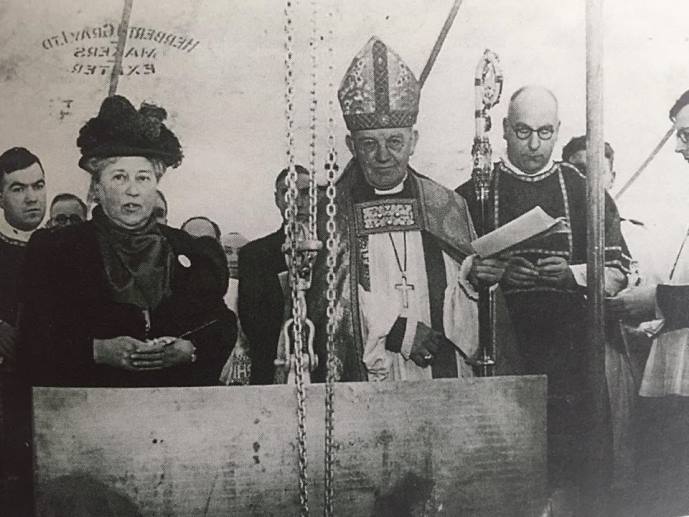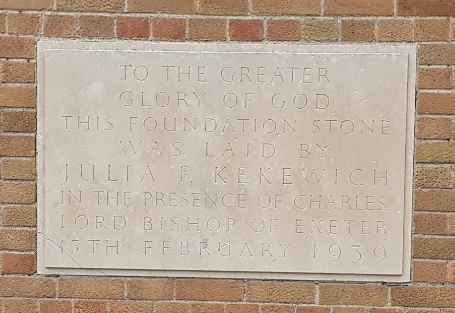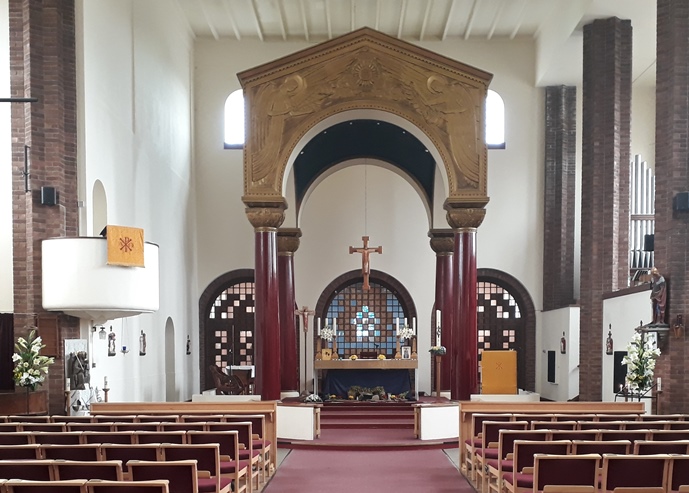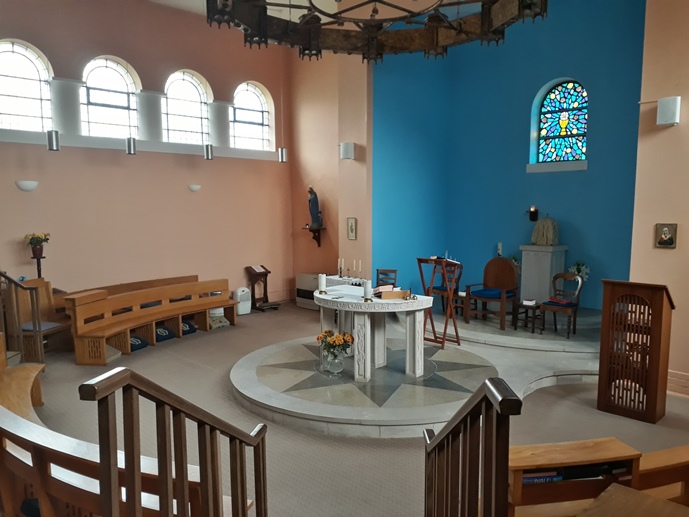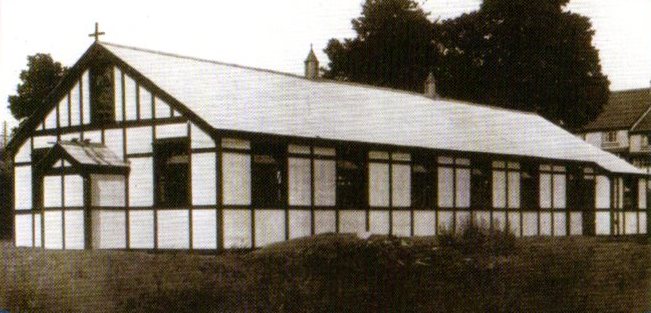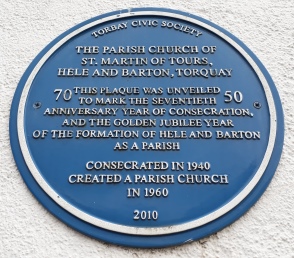History
St. Martin's, the Parish Church (Church of England) for the communities of Hele, Barton and The Willows, first established itself on its current site in 1927, when the original church building - always intended to be temporary - was erected on the site of what is now the car park adjacent to the current church. The outlines of that first building can be seen in the tarmac of the car park.
The temporary church replaced and amalgamated the two tiny separate Victorian village churches which had served Hele and Barton, respectively, during the 19th and early 20th centuries. In 1852 Isambard Kingdom Brunel had purchased a field at Barn Close for housing his workers and to build a school and chapel, but it was to be his sons, Isambard and Henry, who finally built the small chapel 16 years after their father's death, before presenting this to the Vicar and Churchwardens of St. Marychurch. This chapel, and a small chapel in Hele, were later amalgamated on the new site at Barton Hill Road. This reflected the fact that, due to house building and development, Hele and Barton had grown significantly to become, effectively, one place.
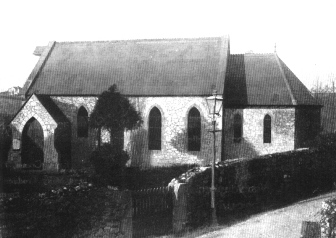 |
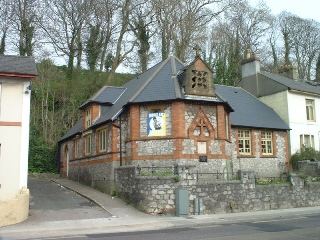
|
| Saint Augustine's, Barton : 1874 - 1928 | The Good Shepherd, Hele : 1883-1928 |
Hele and Barton remained, however, a part of the ecclesiastical parish of St. Marychurch, with St. Martin's run as a 'satellite' Mission Church from and within the parish of St. Marychurch. A clergy house was built adjacent to the church in 1930, (demolished and replaced in 1990) but although this house was named "The Vicarage", the first clergy here were not Vicars of the parish, because there was no parish for them to be vicar of! They were Curates in Charge and Priests in Charge under the supervision and authority of the Vicar of St. Marychurch.
The intention during the 1930's had been that while Church worship and life continued in and from the temporary church, a new permanent building would be erected on the same site. Initially however this appeared to be too great a challenge for the local commmunity - the 1930's being a time of significant poverty, especially in poorer communities such as Hele - and for a while there was doubt whether or not a permanent church would ever be built.
The foundation stone - which can still be seen below the East window of St. Martin's - was laid on 15th February 1939 by Miss Julia Kekewich in the presence of the Bishop of Exeter, accompanied by local clergy and dignitaries, and people from the surrounding community.
The services of an architect, Nugent Cachemaille Day, were obtained knowing he wished to build the church in the style of a Roman Basilica, to reflect the Anglo-Catholic tradition of the Church of England as practised by the parish of St. Marychurch and in the temporary church at Barton.
The result is a strikingly dramatic church building, distinctly continental in appearance, certainly untypical of Devon and of England. It was ahead of its time in a number of ways, not least in the fact that the High Altar is free standing, enabling the Priest to stand behind it facing the people during the Mass. The baldachino (canopy) over the Altar is a representation of Creation showing Christ in Glory hanging on a cross suspended from a depiction of the sun, with the moon, stars and planets surrounding him. The architect also wished to signify that the church on earth is united with Heaven when worship takes place, and the baldachino is designed so that the depiction of Creation above 'meets' the altar below.
The original plans and designs of the building were on a much larger and grander scale than was eventually realised, due to the outbreak of the Second World War in September 1939 as the building work was in progress. With men and materials urgently needed elsewhere for the war effort, the church was hastily completed in 1940 at half its intended length, and without a balcony at the back. The exceptional height of the pulpit reflects the intention it was planned to be half-way between the two floor levels. The planned stone arches were replaced by simple brick pillars, and a large organ, intended to be situated high up on the North wall above the pulpit, was never installed. More modest, but entirely adequate, musical arrangements were placed in the Choir Gallery on the South side of the church.
The new church was finally consecrated on July 20th 1940 by The Right Reverend Charles Edward Curzon, Lord Bishop of Exeter. On August 15th 1960 the community of Hele and Barton was then formed into a new and entirely separate Parish with St. Martin of Tours as its Parish Church. The Priest-in-Charge at that time, Father Derrick Lingwood, became the first Vicar while the Parish, and its clergy ceased to be appendages of St. Marychurch.
A flat-roofed west end extension, comprising a new entrance area and the Baptistry, was added in 1962. The Lady Chapel, shown above, at the far east end of the church behind the main altar was completely re-ordered in the 1980's with its east window, made at Buckfast Abbey by the monk glaziers, funded by the Youth Club of the parish. In 1995 a new electronic organ was installed.
The old temporary church building, shown below, lingered on in use as a Church Hall until 1970 when it was replaced by the present adjacent Church Hall which was refurbished in 2011.
The Temporary Church 1928-1940, and Church Hall 1940 - 1970
On November 11th 2010 Torbay Civic Society, in recognition of St. Martin of Tours as a building of both historic and contemporary significance, unveiled a Blue Plaque in this year of great celebration for the church and the parish. In July the church had reached its 70th Anniversary of Consecration and in August the parish celebrated its Golden Jubilee, the 50th Anniversary of its formation.
Over the years the local community has grown out of all recognition. Hele and Barton are no longer separate villages but an integral part of Torquay, while during the 1990's and since the millennium, the huge 'Willows' housing development added significantly to the parish population. St. Martin's, once geographically on the edge of its own parish, now sits in the centre of the community it serves. It continues to function as an active and dynamic Parish Church, serving the spiritual, pastoral and social needs of the people of Hele, Barton and the Willows, in the work and worship carried out within and from it to the wider community.
